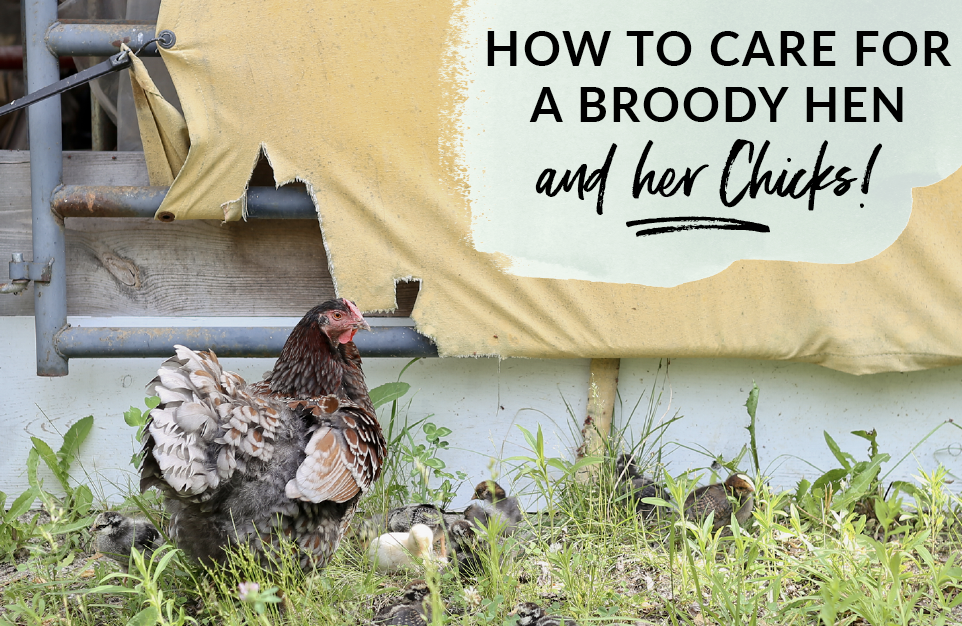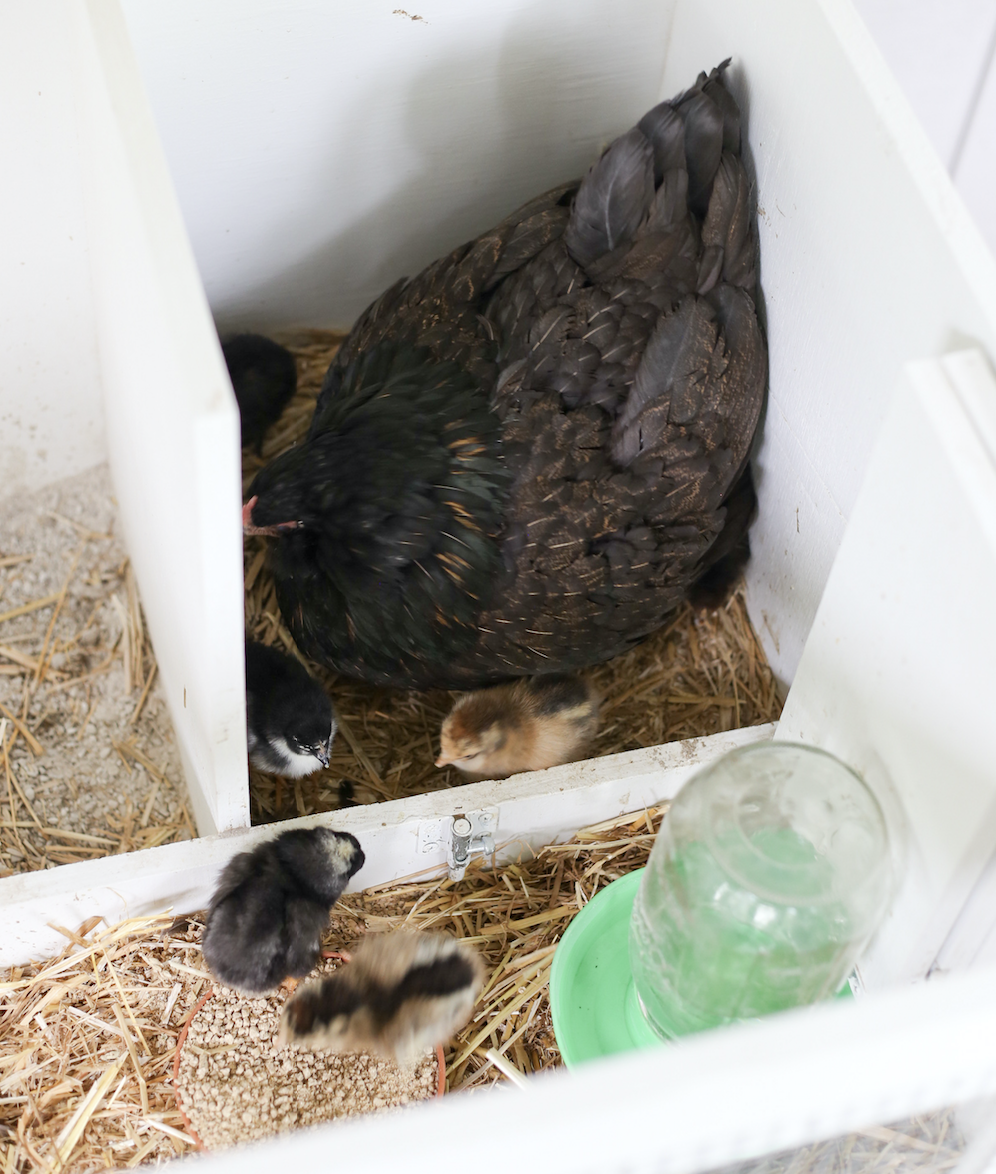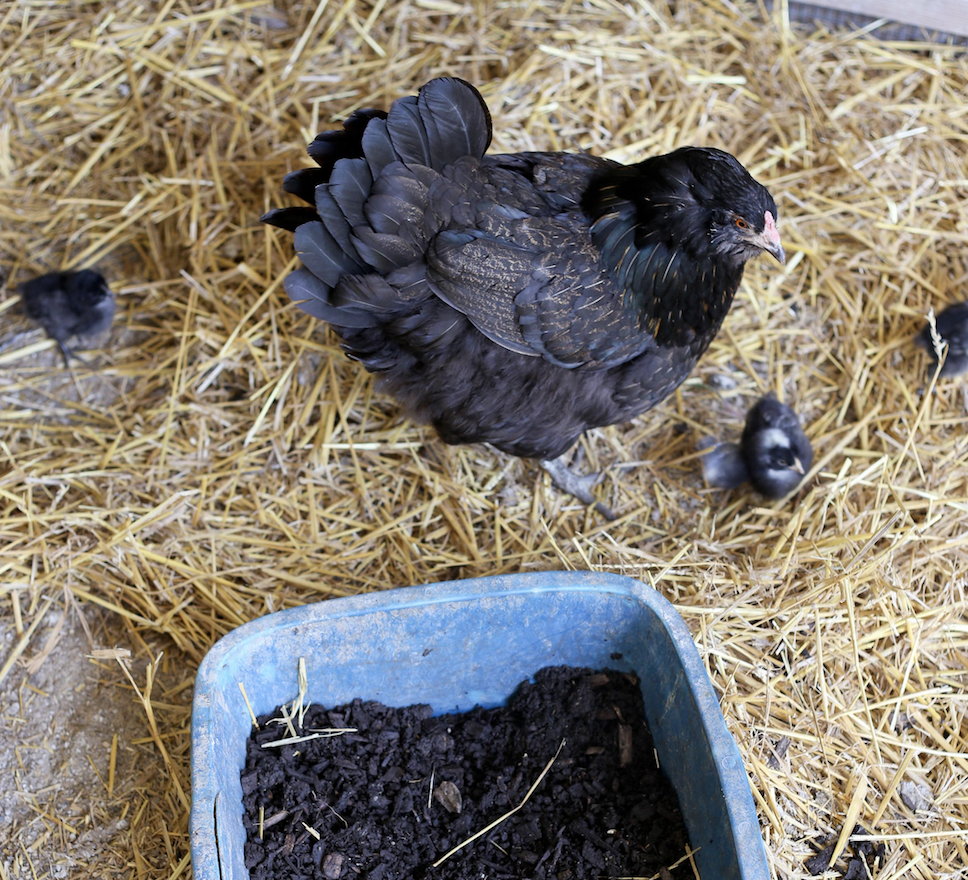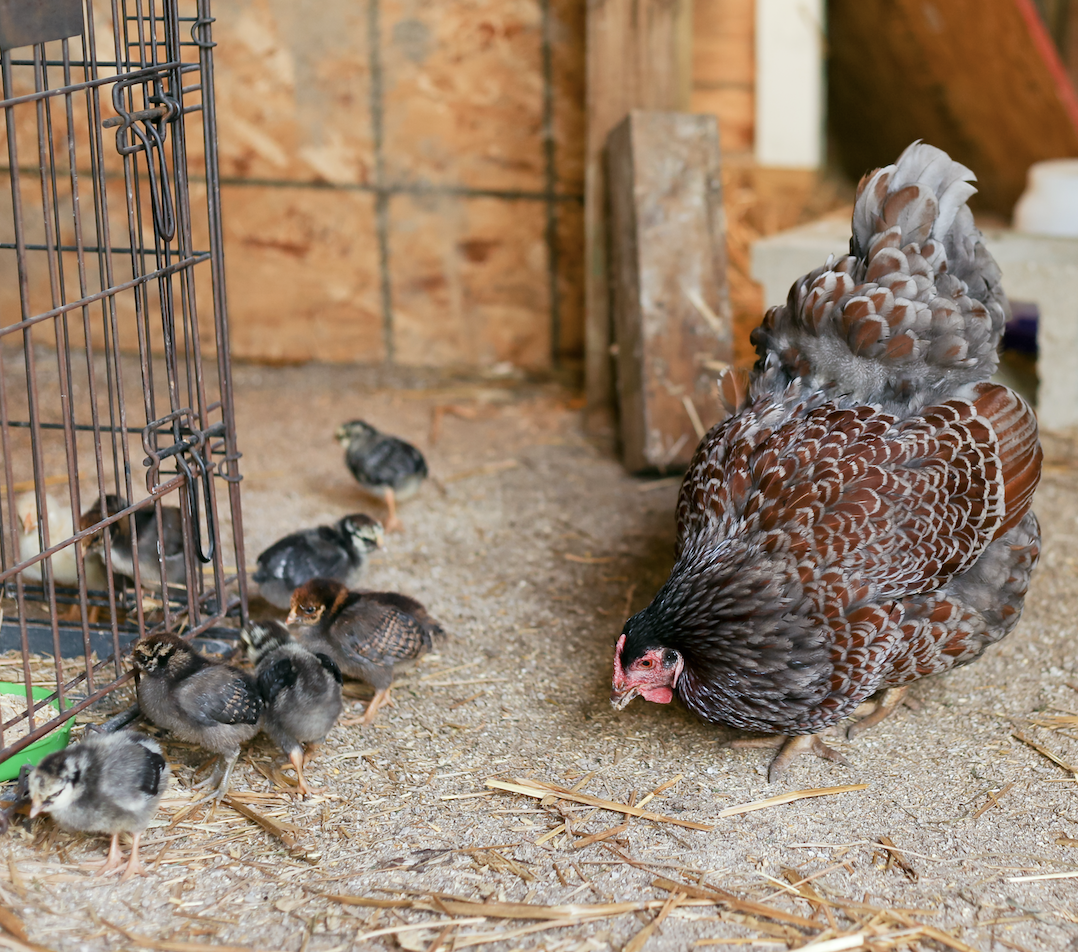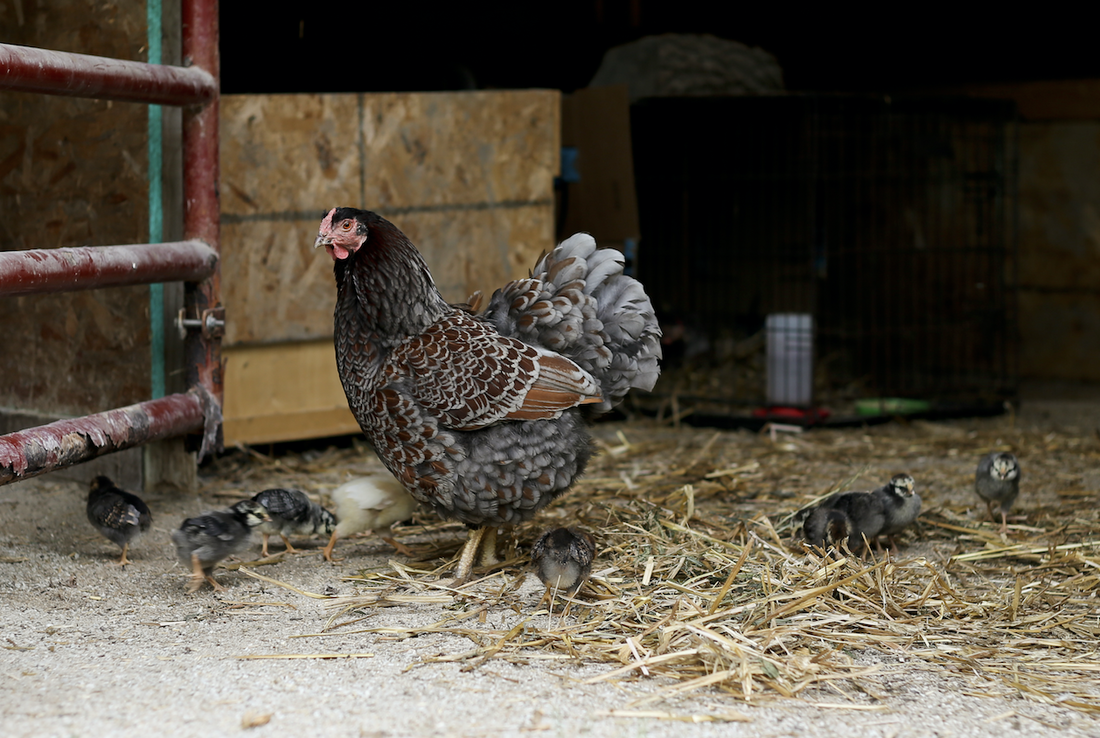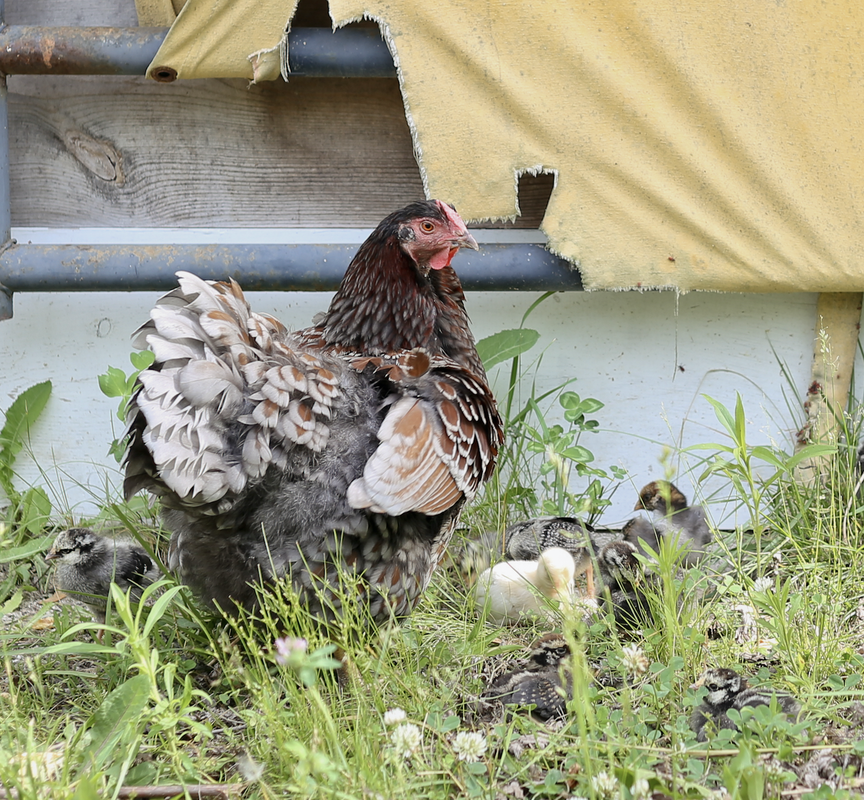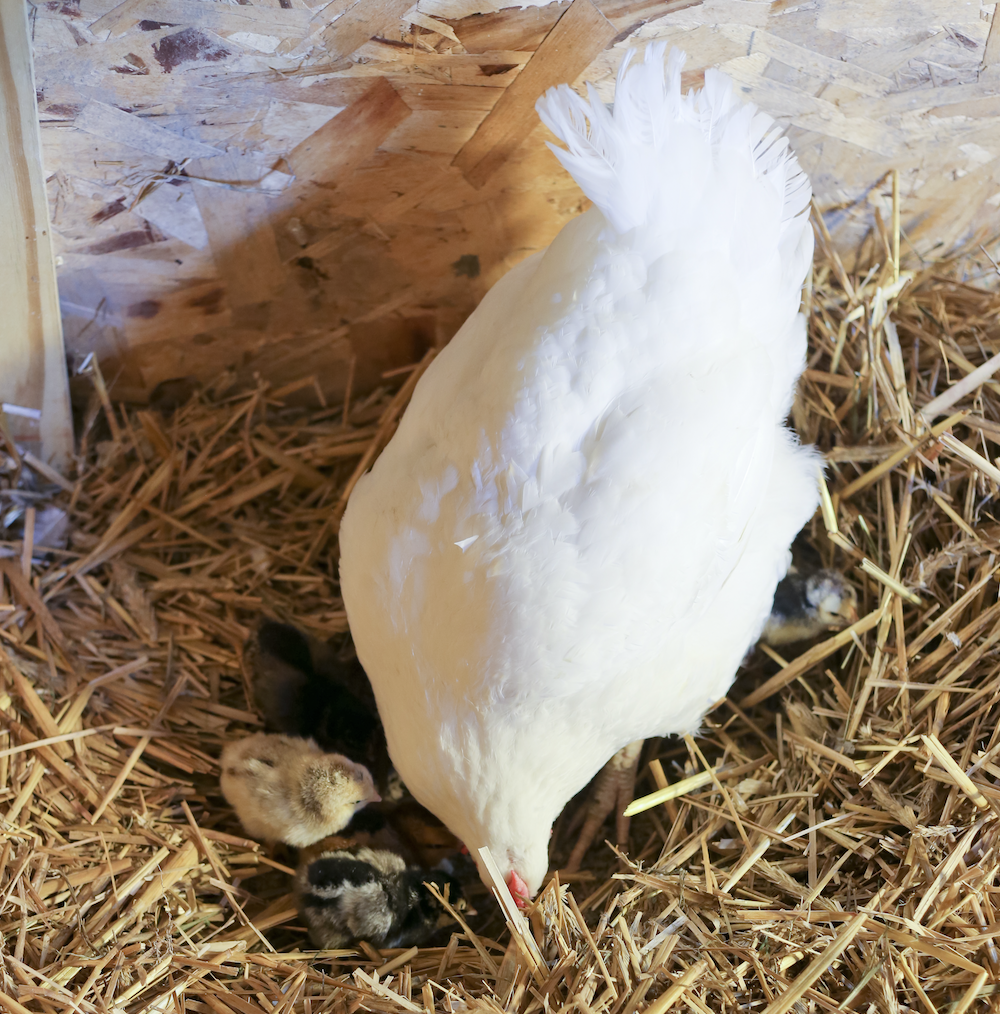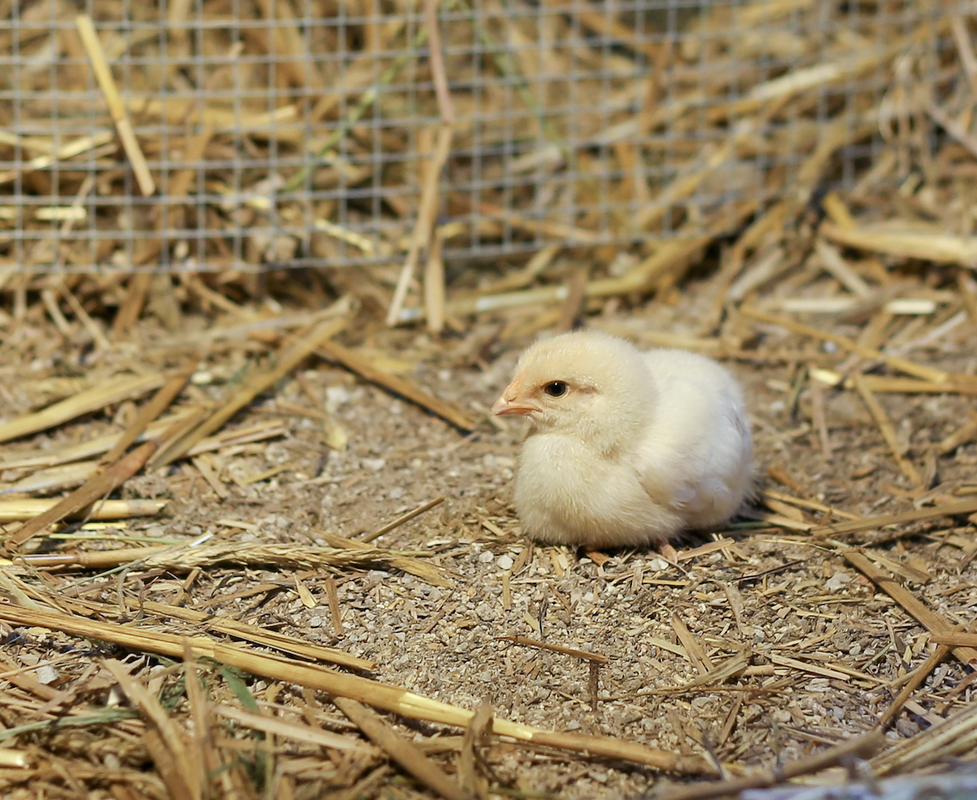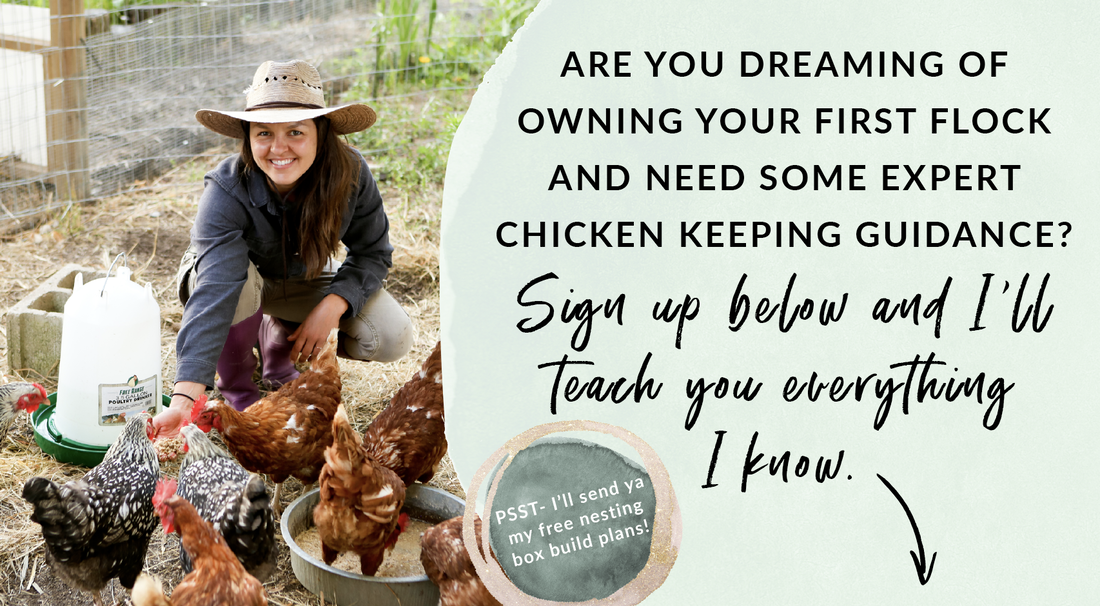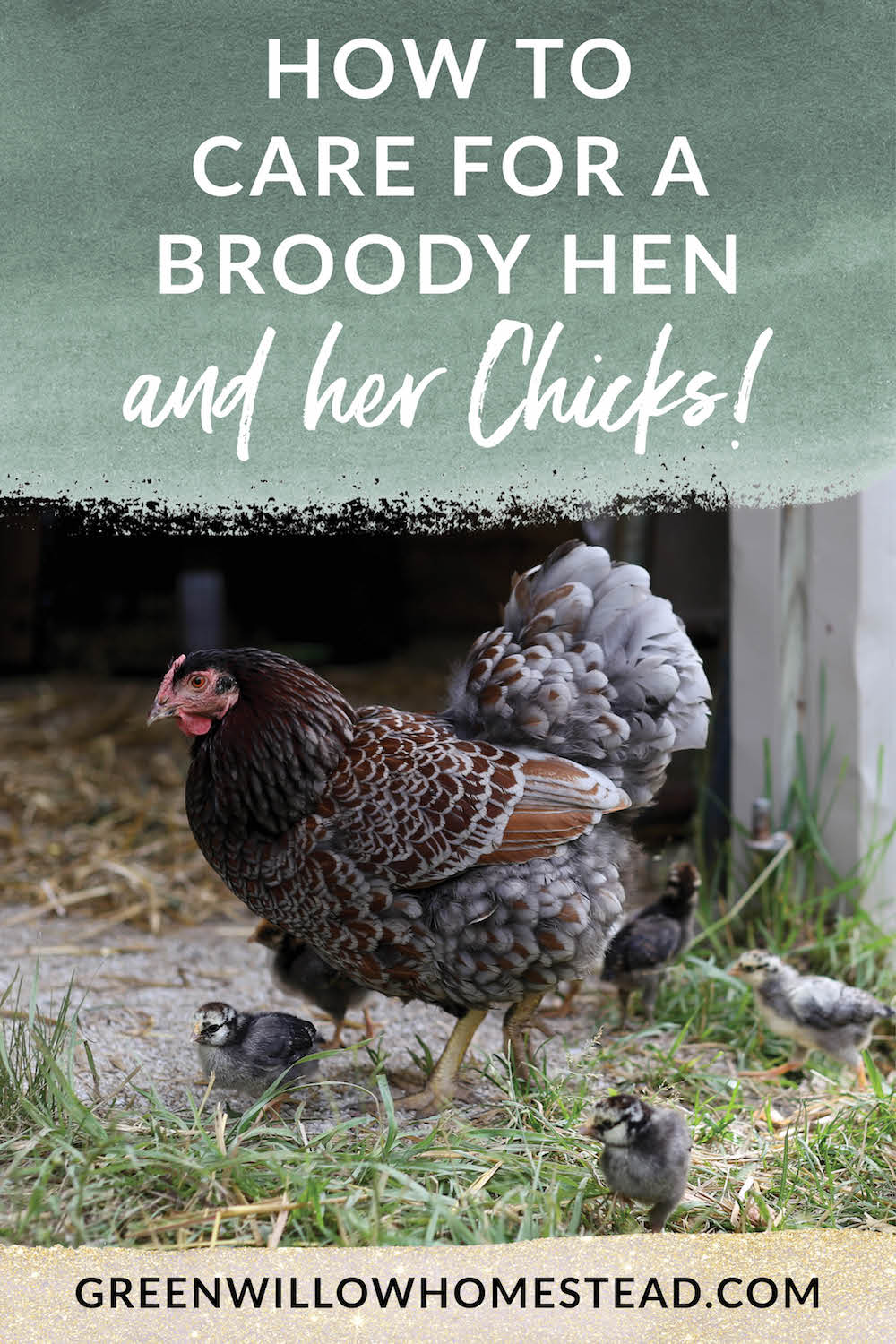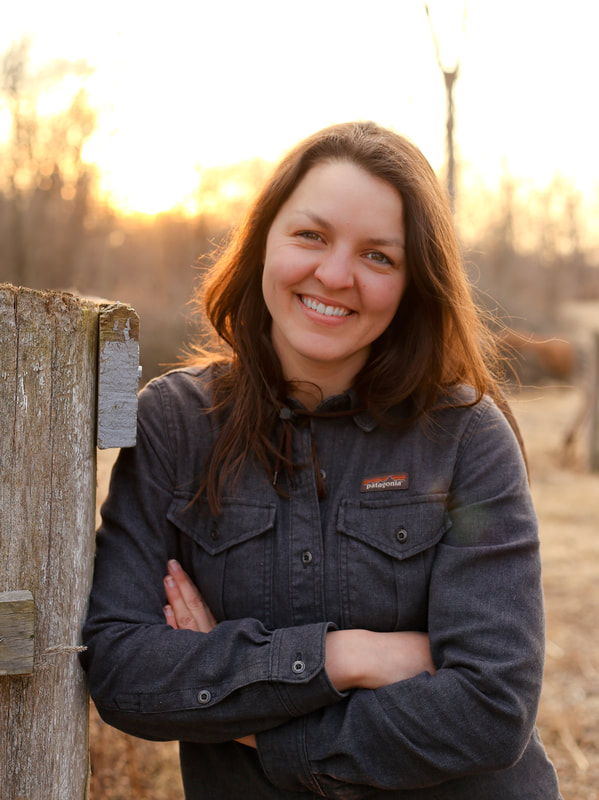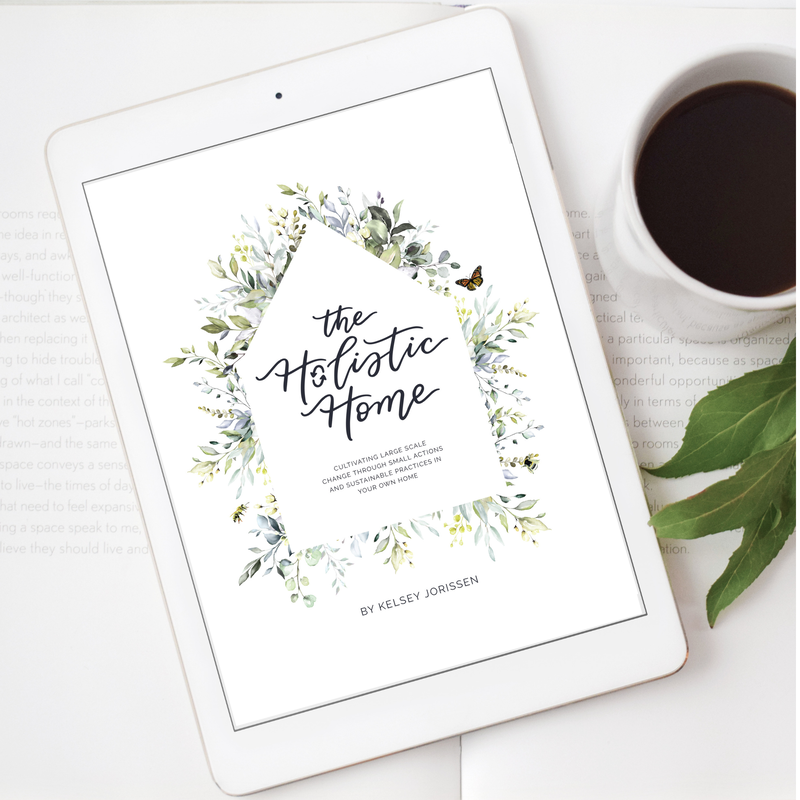|
If you are curious to learn how to hatch chicks using a broody hen and how to care for mama hen and her chicks through their first few weeks then you are in right the right place.
In my previous post I shared with you everything you need to know on how to care for a broody hen and get her to hatch chicks. I highly recommend starting there first to learn how to support your broody hen for the 21 day incubation period and her hatch. In this post I am going to cover:
Please note: Some of the links below are affiliate links, meaning at no additional cost to you, I will earn a commission if you end up clicking and purchasing an item. I worked hard to find my trusted favorites and I want to share them with you so you don't have to deal with all the crappy junk I had to go through. Nuff said
What to expect the first few days after chicks hatch?
Mama hen is going to switch over into forage, teach, and protect mode. This means her first priority is to forage for food so her chicks have enough to eat. We keep mama hen and chicks in our Brooder Box for about 5 - 7 days. We know mama hen is ready to get out when she starts repeatedly making a mess out of the food and waterer in the Brooder Box. Mama hen may cluck loudly and forage in the brooder too, showing she is ready to get out.
Mama hen wants to teach her chicks everything they need to know to survive and she does this by parading them around, teaching them how to forage, and showing them what to eat and what not to eat. Lastly, mama hen is going to stop at nothing to protect her chicks. That means she will always be on the lookout for predators and in some cases work to keep other hens away. Where should you keep mama hen and her chicks?
You have two options for housing and they boil down to being with the flock or being in their own separate secure space. I opt for letting mama hen and her chicks spend the night in a separate space, and letting them free-range throughout the day with the flock (if you have a free-range situation that is).
When you have a separate space for mama hen and her chicks it makes the feeding situation a lot less stressful for you. Since chicks require a different ration than laying hens, housing them with the flock can be challenging. We will get into more detail on food in the next section. Having a separate secure space can be as simple a separate stall in the barn, letting our Brooder Box sit on the ground and using a 2x4 as a ramp so mama and chicks can get in, or rigging up your own space. Right now on our farm we use a separate coop in our barn as a nursery for our growing chicks and it works great. In the past, I’ve built 3’x5’ boxes out of spare plywood and set a piece of 2x4” fencing across the top to secure it and keep predators out. When you move mama hen and her chicks to their new space and you plan on letting them free-range, you need to keep them in the new space for at least three days to allow their sense of home to reset. What this does is teach mama hen to bring her chicks back to the space after free-ranging at the end of the day - just like how your chickens come back to their coop each night. That’s why it’s important for this space not to be too cramped, dark, or hot for your growing chicks. If you don’t plan on letting your chicks and mama hen free-range (say that you only have a chicken run for your hens) then I would keep mama hen and the chicks with the flock in the run. You want your chicks to be integrated into your existing flock, and mama hen will make sure that no one is going to mess with her babies. In this situation, it’s best to set out a milk crate or cardboard box on the floor of the chicken coop so mama hen feels like she has a safe and secure place to sleep with her chicks underneath her. Just like with the brooder box, mama hen and her chicks need a space to dust bath, eat, drink, pick up grit, poop, and safely sleep. Lastly, think of ways to make their new home fun and engaging. My favorite tip is to fill a kitty litter box with a few shovels of dirt (you know, black dirt with lots of worms). This tip provides endless entertainment and a good source of food for the growing chicks (pictured above!). What should you feed chicks raised by a broody hen?
You need to provide a chick feed ration at about 18-20% protein. I recommend having feed available even if they are free-ranging. Laying hens typically have 18% protein and additional minerals like calcium that growing chicks don’t need and can actually harm their growing bodies. Pullets can start eating layer feed at about 18 to 20 weeks.
By having a separate space you ensure that your chicks are able to eat their own food in peace without the rest of the flock chowing down. On the flipside, you also keep the chicks from eating the layer ration which is too high in calcium. Another option is to feed an all-flock ration and supply crushed oyster shells for calcium (which only the laying hens will eat). Mama hen is going to provide a ton of foraged foods for your chicks. She will spend about 90% of her day teaching them where to find bugs, edible plants, and other yummy things. That’s why I think free-ranging is so important for clutches (more on that in a bit)! When it comes to medicated feed vs unmedicated, I have personally gone the unmedicated route. Medicated feed helps prevent coccidiosis, a disease that can crop up in warm, wet, and dirty places. We are careful to raise up our chicks in dry clean environments, but the weather doesn’t always allow for that. You can jump to our chick health section to learn how we deal with coccidiosis. I do generally suggest adding 1 tbsp apple cider vinegar per gallon of water to help boost immunity. Chicks also need access to chick grit. Grit helps the birds grind up and digest the nutrients made available in grain. In my experience, if you let your flocks free-range or they have consistent access to a dust bath, finding grit usually isn’t too much of an issue. How should you provide water to mama hen and her chicks?
I’ve used everything from chick waterers, to the gravity fed waterers, to nipple waterers. Mama hen will teach her chicks how to drink from each - and even from puddles! We keep three waterers set out all across our free-ranging area to ensure that our flock doesn’t run out of water. We also keep a chick waterer in their separate secure place.
Can you give treats to chicks?
If you let them free-range, mama hen will find all sorts of goodies for the chicks. On the super hot and humid days, I will set out frozen fruit and corn for the entire flock to eat and the growing chicks will inevitably eat some. Remember, treats shouldn’t be the majority of any chicken's diet, chicks included.
Should you let mama hen and chicks free-range?
If you can’t tell, I’m a huge fan of free-ranging. I think it allows for the chicks to learn as much as possible and opens their diet up to a much wider range of food. Over the last five years of owning chickens, I’ve come around to the idea that the chicken knows best. My hens are going to eat what they need when they need it and free-ranging allows them to express their true and full chicken-ness.
Usually our biggest concern with free-ranging is predators. While of course this is no guarantee of safety, mama hen is going to do her absolute best to keep her chicks safe. You know what type of predators lurk in your area and each chicken owner’s free-range situation is different. Where we are in Wisconsin we deal with coyotes, raccoons, weasels, owls, hawks, and opposums. We have never had an issue with a predator getting mama hen and her chicks during the daytime while they are free-ranging. Where does mama hen and the chicks sleep?
Chicks will stay underneath mama hen at night up until about 3 weeks old. The weather will also affect whether chicks are underneath mama hen or not. We find when it's humid and hot at night, the chicks will sleep next to mama hen so they don’t suffocate.
As I mentioned previously, setting out a box or milk crate can give mama hen a sense of safety and security while they sleep at night. We like to keep mama hen and her chicks off the floor to steer clear of mice (which bring in lice and mites). Mama hen usually will hunker down in a corner of the spare coop so we will move them to the nesting box we have in that coop and put a 2x4 on it as a ramp so the chicks can get up and down. We usually have to physically move mama hen about four nights before she understands where she should be bedding down at night. After that, mama hen leads her chicks up into the nesting box herself. What are the signs of a sick chick and what should I do if I think a chick is sick?
Mama hen will do a great job keeping her chicks healthy, but sometimes you end up losing a chick. We have lost chicks to suffocation (underneath mom on a hot night) and organ failure. Some issues can’t be treated (like organ failure) but the best treatment is prevention.
If you find it hard to keep things dry and clean, then preventative treatment for coccidiosis is needed. I recommend the Corid brand to help deal with cocci. You mix ½ tsp of the powder per gallon of water for 5-7 days. We have done this on the exceptionally wet and humid years on the farm as a preventative measure. External parasites, like lice and mites, are another issue to watch for with your chicks. Have a ry dust bathing area available at all times. Mama hen will teach them how to dust bathe around day 7-9. Chicks are sick if they aren't eating or drinking, they are acting lethargic, and aren't able to keep up with mama hen while she forages. Nature will always take its course though, and losing a chick is not anything to be ashamed of as a chicken keeper. It’s definitely hard emotionally and you come to respect death a whole lot more when you raise hens! How long does a hen care for her chicks?
In my experience mama hen will punch in after about 4 - 6 weeks of mothering. It happens quickly too, like one day mama hen is showing them where all the bugs are and then the next day she is pecking them to leave her alone! It’s hard to watch and the chicks spend the first day slightly confused, but after that they are perfectly fine.
Mama hen will go back to roosting with her original flock at that point and the chicks may follow and roost as well or they will bed down in their separate secure space you created. At the one month mark, I think it’s important to have the chicks roosting - either with the flock they need to integrate with or in their own space. In some cases this means physically moving them up to the roost at night. I usually have to move month old chicks up to the roost about three nights in a row before they understand and do it themselves. If you integrate chicks into their flocks at the one-month mark, you need to feed an all-flock ration without calcium, and then supplement calcium on the side in the form of crushed oyster shells. The laying hens will help themselves to the calcium as needed and the chicks/pullets won't touch it. Then at that point - they are teenager chickens! Remember you can start feeding them a laying ration at about 18-22 weeks. From there, they'll start laying around 5 - 6 months of age! If you liked this post, be sure to read my first post on How To Hatch Chicks Using A Broody Hen!Thank you!You have successfully joined our subscriber list.
16 Comments
Randy
2/3/2022 12:12:07 pm
My broody buckeye just hatched two silkie rocks; thanks for the insight.
Reply
Trammel
5/21/2022 08:30:32 pm
Thank you for the article, two hens and 6 new chicks. First time and we free range. Currently using a couple rabbit cages as maternity wards. Next weekend I will start to let them venture out. I got pecked pretty hard today when trying to change her water. Very protective.
Reply
Denise Carlson
5/29/2022 07:04:17 pm
Just foundna chicken w babies today. The chicks r just a few days old we think. She must have laid the eggs somewhere other than the coop. I am thankful for this article as I will have to change feed for all 34 chickens and roosters for at leastb8 weeks
Reply
Matt Guzinski
9/9/2022 10:04:07 pm
Most of the site I read said I needed to separate hens and chicks from the other hens. Have 1 rooster. Let nature take its course and have had zero problems with other hens or the rooster. Have 16 hens and a rooster. Just posting for all the sites that say you need too or have to get the hens/chicks away from the rest.
Reply
It's interesting to know that it is a good idea to have an 18-20% chick feed ration with protein. I guess the right amount of animal feed is important for the health of the chicks as they grow. The farmers might already have the experience and idea how to do this right to be getting the best quality eggs from them as well when they are at the right age.
Reply
Sierra
4/11/2023 10:20:25 am
Hi, I was wondering if anyone had a solution to help a 5 week old chick that just got separated from her mom, her mother started to reject her so I separated her but she is searching for her mom and won't stop crying. She was the only one her mother had so she is all along.
Reply
Kelsey
4/11/2023 11:08:31 am
If she is all alone I'm not sure what to tell you other than you have a chick you need to raise on your own! Also, 5 weeks is starting to get a bit more independent so mama hen can start to be a bit more rude and force chicks to go out on their own.
Reply
Sierra
4/11/2023 12:14:40 pm
The mom kept pecking at her so I removed her and put her with the rest of the hens, we have 3 one week old chicks but the 5 week old wants nothing to do with them.
Patty Herrington
5/16/2023 09:01:25 am
I would take the chick inside and care for it until is big enough to go out with the others around 12 weeks old.
Reply
Alexis M
5/2/2023 07:10:58 pm
Super helpful info! My Silkie was a surrogate to 5 chicks that hatched about 48 hours ago. I notice momma hen is extremely tired this evening. Is this normal? I have mom & chicks in a private coop next to our larger coop & run with the remaining flock. She’s stayed in her nesting box while the chicks roamed around the small coop. She can reach food and water which I saw her eat and drink via camera today. Just concerned that she seems so exhausted.
Reply
Kelsey
5/3/2023 08:35:35 am
Hi Alexis - I'm not 100% sure. If she is eating and drinking she should be okay. Be sure to check her butt for lice or mites though!
Reply
Sherri Becker
6/11/2023 08:21:57 pm
I have a flock of 11 hens and 1 rooster. They all eat the same food for layers. How will this affect my rooster?
Reply
Kelsey
6/12/2023 05:48:35 am
Hi Sherri! Your rooster should be just fine! :)
Reply
Alexis D
6/26/2023 04:23:23 pm
I have 3 chicks in the process of hatching under mom and currently they are in a separate coop that is 3 ft off the ground. Should I put food and water in the coop or will mama take them down the ramp to get to it?
Reply
Dana Koenig
7/4/2023 09:37:30 am
Hi there - I have a question - we are putting day old chicks under our broody mama on Wednesday. My husband is making a miniature run for them with 2x2s and hardware cloth and making it so we can access it from the top. I too thought we had to keep our chicks safe from other chickens. I am nervous to free range with tiny babies but rethinking. So in our maternity ward i should put a brooder plate (if mom rejects them) a feeder and waterer for chicks, and leave the door open so she can take them out? SO confused about how to do this
Reply
Charlotte Coley
9/5/2023 11:21:27 am
I also have 3 new chicks, 4/5 days old. We were out of town. Came home to find them on the ground of our run, doing just fine. At dusk everyone went to bed including mama and left the chicks to fend for them selves. I raised my first chicken family this spring so i caught them and put them under a heat light because temp was around 58'. I convinced myself that they wouldn't make it over night. This am before daylight I put them the container they slept in back into the run. mama came down the stairs and continued as tho nothing had changed. Do the chicks really fend for themselves as she roosts with the others
Reply
Leave a Reply. |
Meet Kelsey,Thanks for stopping by Green Willow Homestead! From chicken rearing to composting, we've got our hands full and we love sharing what we've learned along the way. Follow along as we turn the 80 acres we call home into a farm that serves its community and a homestead that nourishes us throughout the seasons. Grab the EbookListen in!FREE Guide!Tune in to our YouTube ChannelInspirationsCategories
All
Favorite Books of 20241. Erosion
2. Braiding Sweetgrass 3. As Long As Grass Grows 4. The Small Scale Poultry Flock 5. The Zero Waste Solution Archives
April 2024
|
FOLLOW KELSEY ON INSTAGRAM!
As an Amazon Associate I earn from qualifying purchases. |

